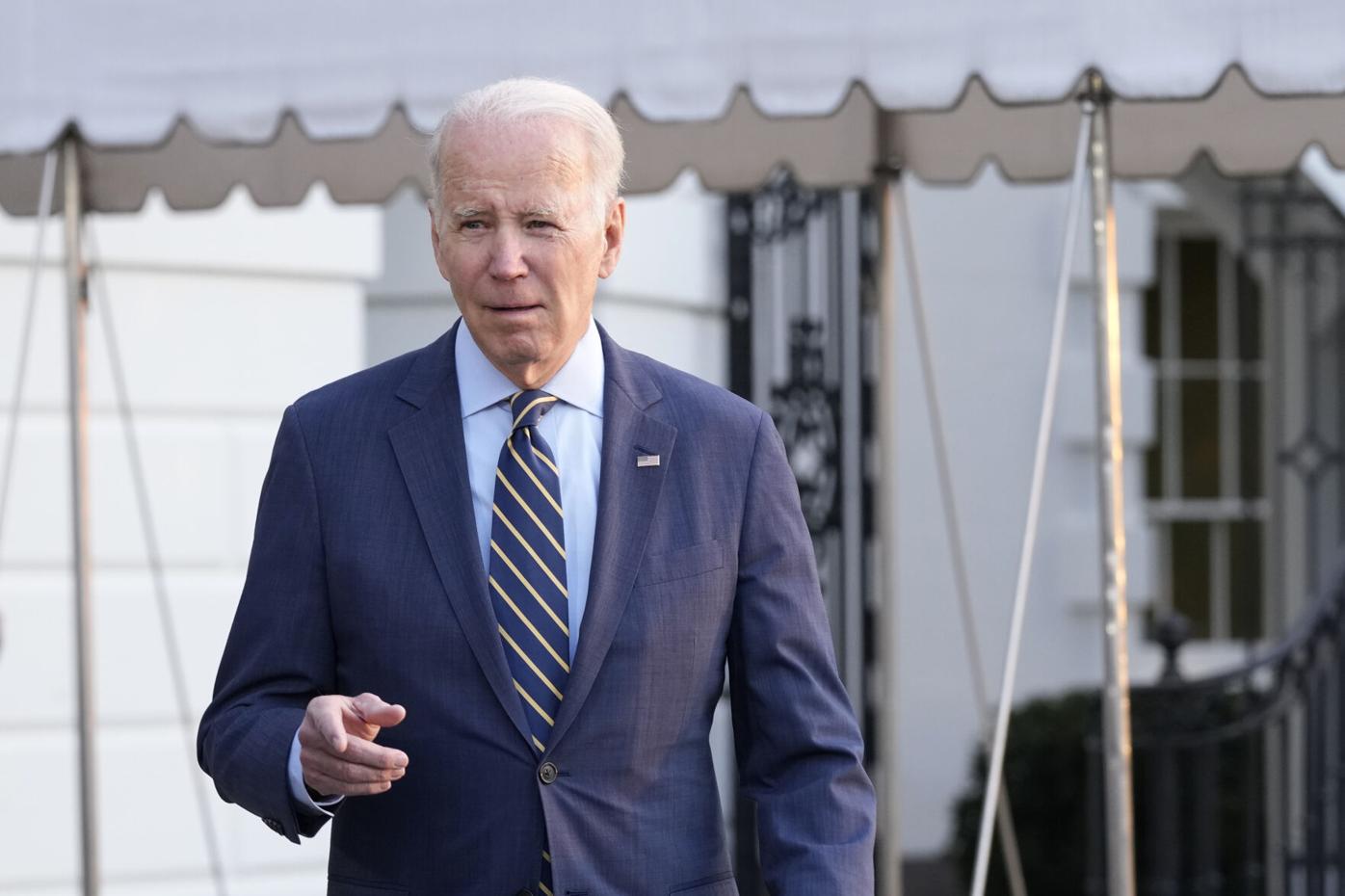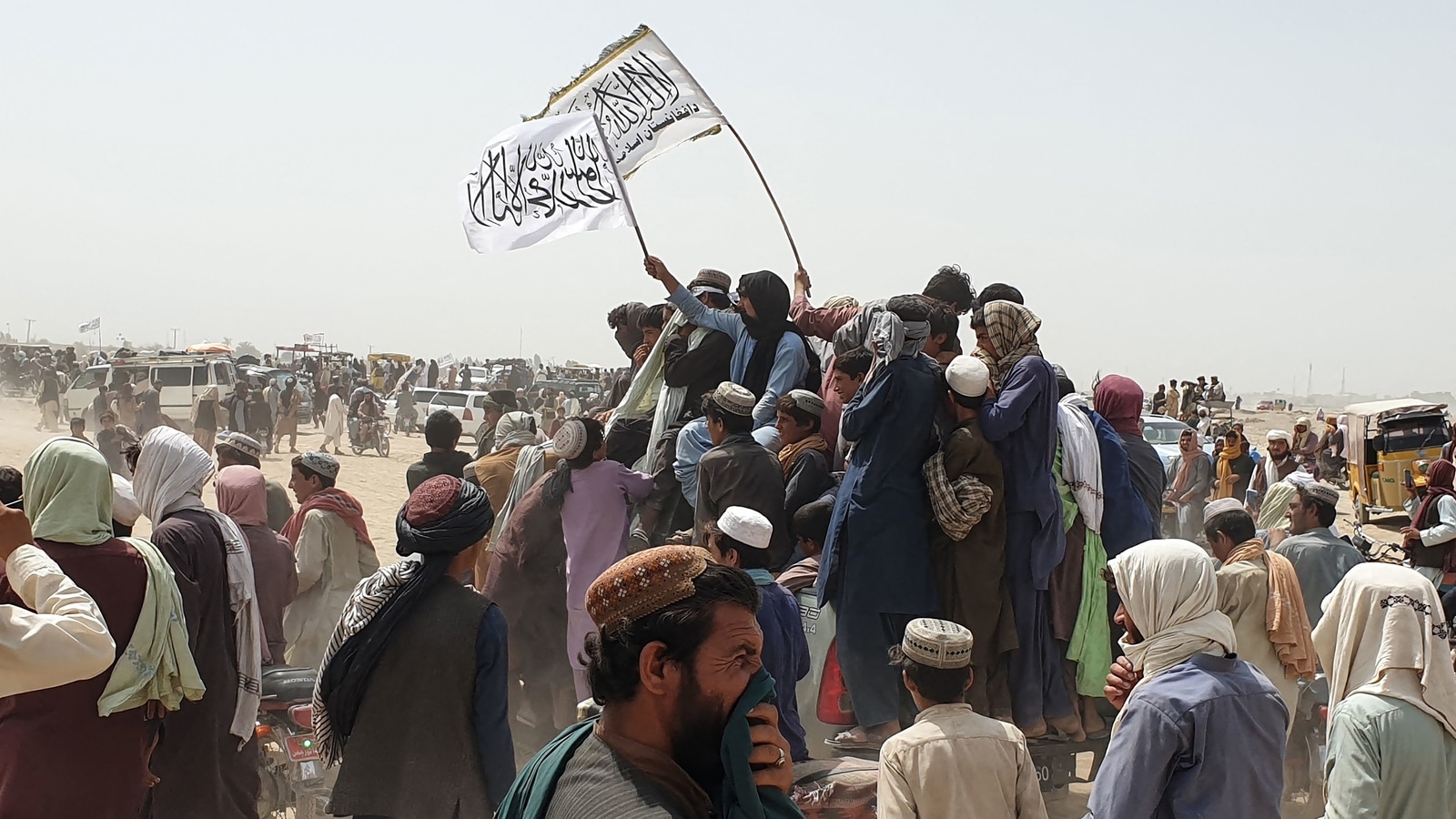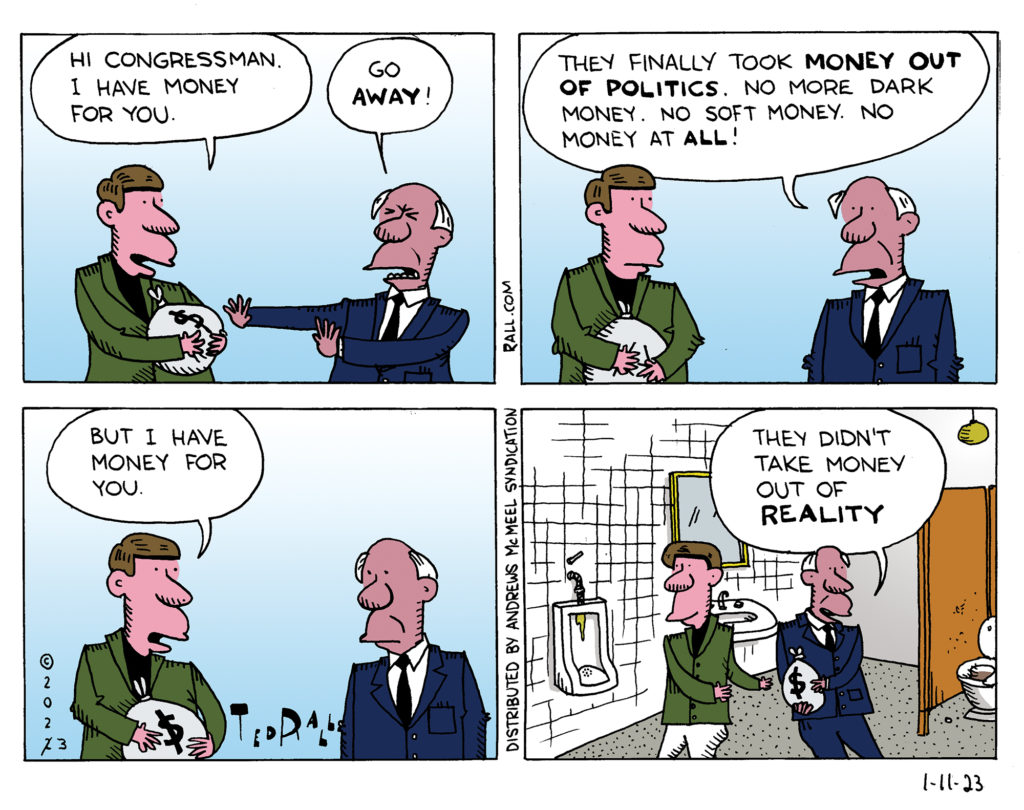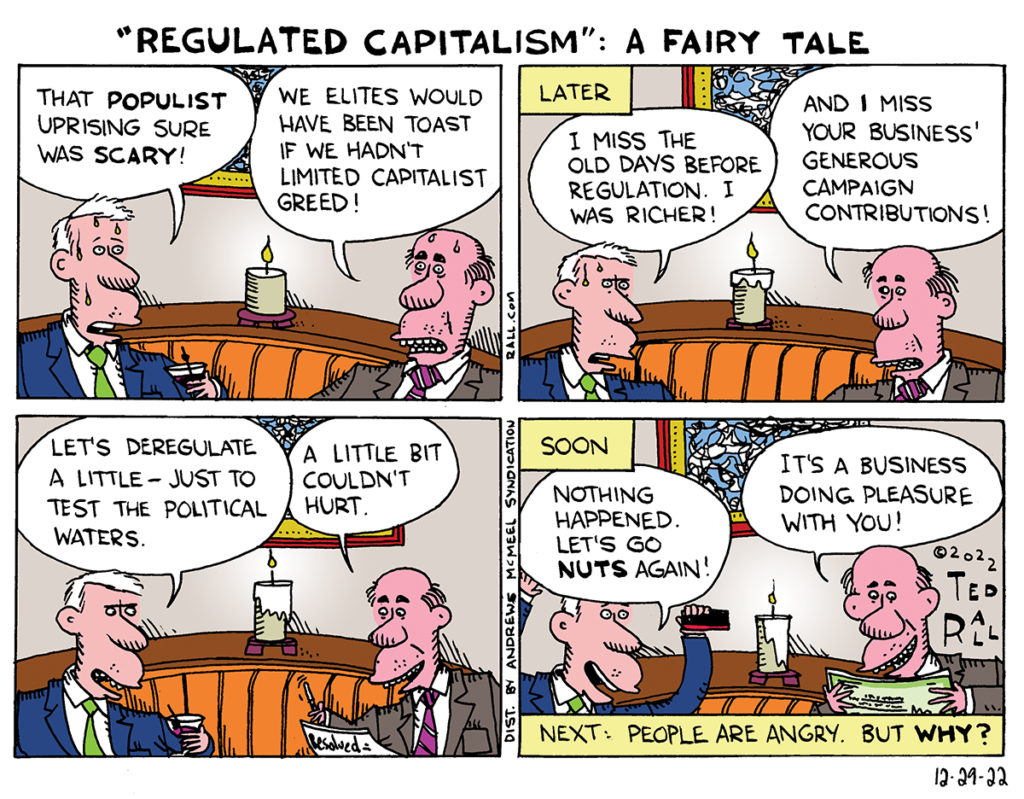The Supreme Court has agreed to consider the vexing question of whether Donald Trump should be disqualified from the presidential ballot under the 14th Amendment prohibition against insurrectionists. Too bad we don’t have smarter jurists.
Joe Biden and the Democrats: A Slow-Motion Train Wreck of Their Own Making

A new Washington Post-ABC News poll places the President’s approval rating at a record low, 36%. In the modern era, no president has been reelected with numbers like these.
58% of Democrats want their party to nominate someone other than Joe Biden in 2024. Of Democrats.
If the election were held today, Donald Trump would beat Joe Biden by four points.
Only 32% of voters think Biden has sufficient mental sharpness to do a president’s job.
This, as grim is it all is, is the good news. Enjoy, Democrats! Because it’s downhill from here. The economy is, as usual stupid, the biggest issue; just as the campaign begins this fall, so will a recession, according to the Federal Reserve Bank. Then there’s Hunter Biden’s pesky laptop, the gift that keeps on giving to the Republicans. Whether Joe proves to be “the big guy” who gets slices of kickbacks or the $13 million that mysteriously wound up in his bank account in 2017 and 2018 turns out to be a bribe paid by an Uzbekistani telecom or some other scandal related to the crack-addict deadbeat-dad son who refuses to shut up, it’s beginning to smell a lot like whoop-ass.
Biden reminds me of the classic “Tales from the Darkside” episode in which a grandfather is too stubborn to admit that he’s dead even as chunks of flesh slip off his face. The American people have a clear, loud message for the president, which he refuses to hear: we hired you for one term. Which is kind of what he promised.
It isn’t, of course, too late to reverse course. Nothing prevents the president from announcing: “Well, on second thought, actually I’d like to spend more time with my great-great-grandchildren.” Who knows? With Joe an officially lame duck, Kamala Harris might step up and impress us with her border czarina gig—or her new AI thingie.
Could be he’s up to some 17-dimensional chess, as suggested by my fellow Centerclip contributor Rina Shah. Shah recently mused, and I think she’s on to something, that Biden officially announced in order to clear the field of Democratic competitors and set the stage for him to anoint his chosen successor whether they be Harris or someone less impressively unpopular. Such political bait-and-switch would be a new low—but don’t forget, we are talking about a guy who got 51 former intelligence officers to manipulate a presidential election for him, while risking World War III.
Short of these two options, what can an incumbent president who is disliked, disrespected and deemed to be dim, do to dodge defeat?
We know what Democrats plan to do: what worked in 2020.
Biden will point out that he’s not Trump. “Compare him to the alternative,” Biden surrogate Senator Chris Coons (D-DE) says. He won’t campaign. “Frankly, the best way to run for re-election as president is to be president,” Coons argues. He’ll avoid debating his Democratic primary challengers. He’ll hope Trump goes to prison (as if the legal system could act quickly).
But 2024 isn’t 2020. The pandemic is over. America is outside again. Americans expect their president to be out there with them.
“Watch me. It’s all I can say.” That’s what Biden says whenever a reporter asks whether he’s too old for his job. Trouble for him is, we have been watching—for three years—and the results are in that Washington Post-ABC News poll. Fair or not, we don’t like what we see.
Biden and the Democrats can’t talk their way out of the widespread perception that the president is past his due date. Cries of “ageism” are falling on deaf ears, including among the 62% of voters over age 65 who think Biden is too old. There’s one possible solution: stop hidin’ Biden.
Put the President out in front of the White House press corps every single day of the week, fielding unscripted questions, no cheatsheets allowed. Have him do weekly town halls, including in hostile Republican territory. Grant presidential interviews to vicious right-wingers like Sean Hannity—and don’t forget left-wing progressives. If Biden does all that for months on end and manages to hold his own, he might turn some of us into believers.
Biden’s staffers and advisers, many of whom worked for Obama, are not stupid people. They know what must be done to save this doomed reelection campaign. Unfortunately, they know they can’t do it. Biden isn’t up to a tough race.
So here the Democrats go, eyes wide-open, standing like idiots on the tracks as the train appears in the distance and slowly draws nearer. Disaster is as avoidable as can be. They can amble off those tracks any time. All they have to do to save themselves is make a move.
Right now, they’re paralyzed.
(Ted Rall (Twitter: @tedrall), the political cartoonist, columnist and graphic novelist, co-hosts the left-vs-right DMZ America podcast with fellow cartoonist Scott Stantis and co-hosts “The Final Countdown” radio show Mon-Fri 10 am – 12 noon ET. You can support Ted’s hard-hitting political cartoons and columns and see his work first by sponsoring his work on Patreon.)
Only in America
Supporters of Ukraine in its conflict with Russia seem unable to understand the terrible optics of the fact that President Biden, who has essentially entered the war on the side of Ukraine, has a drug addict son who received a lucrative no-show job from Ukraine. There is no distinction between the appearance of conflict of interest and actual conflict of interest.
Wars Make Bad Badfellows
Many Americans are skeptical about military support for Ukraine given that country’s dismal human rights record and autocratic political system. One might also wonder why any other country would want to get into a relationship with the United States.
The Taliban’s Dramatic Military Victory

Now that President Biden has pulled the U.S. military out of Afghanistan, it’s clear that we have little to show for more than $2 trillion and thousands of soldiers killed over two decades of occupation. We will soon be back where we were on September 10, 2001, when the Taliban governed Afghanistan.
Afghan government troops have neither the will nor the training to protect their corrupt leaders in Kabul. Defeat of an Afghan government sinking in passivity and denial will occur within months or weeks.
Soldiers of the regime installed by the administration of George W. Bush and propped up by his successors are deserting and fleeing across the border to Tajikistan. Taliban troops have surrounded and briefly taken over both Kunduz, a city whose wobbly back-and-forth allegiances make it an Alsace-like wartime bellwether, and Herat, long considered unconquerable because it was controlled by Ishmail Khan, a former Northern Alliance warlord long considered the nation’s fiercest and most competent opponent of the Taliban. The Taliban can and will return for good.
They recently captured key border crossings with Iran, Turkmenistan and Tajikistan. The Iran border post alone generates about $20 million per week in customs duties—revenue that now belongs to the Taliban.
Kabulis await the inevitable triumph of the Taliban, resigned to whatever fate awaits them.
Even tongue-shaped Badakhshan province on the remote northeastern border with China is “on the verge of falling completely” to the Taliban. Badakhshan was the Northern Alliance’s last redoubt, the only section of the country that successfully resisted the Taliban when the militants ruled between 1996 and 2001.
Media coverage about the coming transition will focus on the plight of women, the role of ISIS, reprisals and the return and style of sharia law. What will be lost, but deserves to be noted as well, is that the Taliban have just achieved a stunning military victory.
Never in recent history, not even in Vietnam or in Afghanistan against the British in the 19th century, has a rural guerilla army achieved such a dramatic defeat against a colossus that held every military, political and economic advantage.
With the most sophisticated fighter jets in the world, hundreds of cruise missiles and a huge fleet of assassination drones, the U.S. enjoyed complete dominance of the skies throughout the war. The Taliban didn’t have a single plane. Whereas the Viet Cong were enthusiastically armed and trained by China and fought alongside the nation-state of North Vietnam, poorly-sourced reports allege that the Taliban may have received—at best—sporadic, extremely limited support from Iran and Russia. They were forced to live underground, constantly hiding from American forces.
Not only did the Taliban win a protracted war against the world’s biggest superpower, that superpower is leaving them a brand-new nation built from the ground up. Twenty years ago, Afghanistan was a failed state with 14th century infrastructure. Roads, all unpaved, didn’t even have names. There was no electricity, no phones, no sewage, no running water. There wasn’t even a banking system.
The United States is leaving them $8 billion worth of roads and highways, a $1 billion power grid, dams, canals, levees, drainage systems, bridges, tunnels, airports, the Internet, you name it. 85% of the country’s population is covered by cellphone service; that’s not true of the Hamptons.
We have gifted the Taliban $36 billion in infrastructure spending.
You’re welcome.
Military historians will study the Taliban insurgency for years to come. In the meantime, empires like the U.S. and resistance movements like the Taliban can each draw important lessons.
Whether they are an indigenous movement like the Taliban resisting foreign invasion or a revolutionary organization seeking to overthrow a domestic government, anyone who seeks to take on a state with superior manpower, training and weapons should take the failure of the U.S. invasion of Afghanistan as proof that an inferior force need not be intimidated by such daunting disparities. From the revolutions in France, Russia and China to the anti-colonial struggles in Africa and Asia, many notable regime changes have succeeded despite the odds. If you have the support of the people and relentless dedication to fight steadfastly through countless setbacks, you can prevail in an asymmetric conflict. This is particularly true if your adversary is foreign and requires domestic political will and to maintain long and expensive supply lines.
Big powers like the U.S. can impose their will overseas, but within limits. It is possible to imagine an alternative scenario in which the U.S. might have succeeded in Afghanistan. First and foremost, the United States should have allowed Afghans, a fractious people united only by their opposition to foreign domination, to choose their own leaders rather than sidelining the exiled king at the 2002 loya jirga. Installing Hamid Karzai, a paid CIA operative, as president, was a catastrophic misstep. Brazenly interfering with Afghanistan’s internal politics re-legitimized the Taliban’s message that Westerners are corrupt and exploitative hypocrites and exposed our rhetoric about self-determination as hollow.
Allowing democracy to run its course would have been risky but smart. Walking our talk and keeping our thumb off the scale would have outweighed the downside risk that Afghans might have elected the “wrong” leaders.
(Ted Rall (Twitter: @tedrall), author of the books “To Afghanistan and Back” and “After We Kill You We Will Welcome You as Honored Guests: Unembedded in Afghanistan,” is also the author of a new graphic novel about a journalist gone bad, “The Stringer.” Now available to order. You can support Ted’s hard-hitting political cartoons and columns and see his work first by sponsoring his work on Patreon.)








